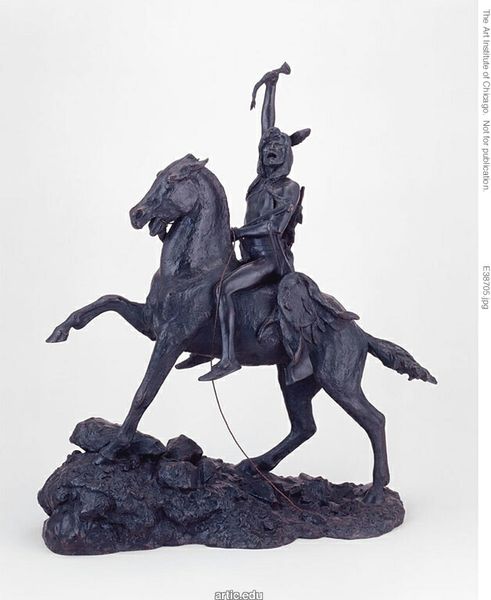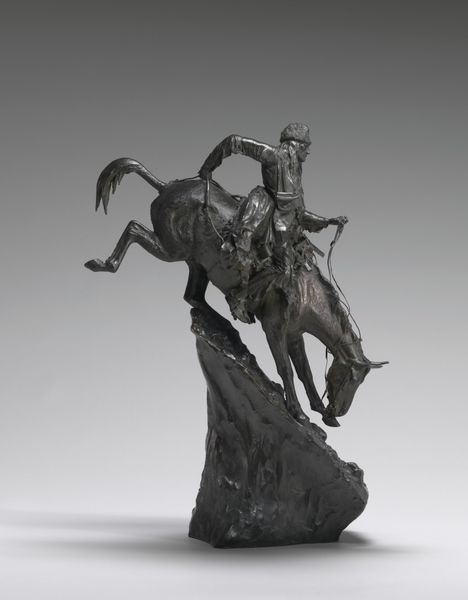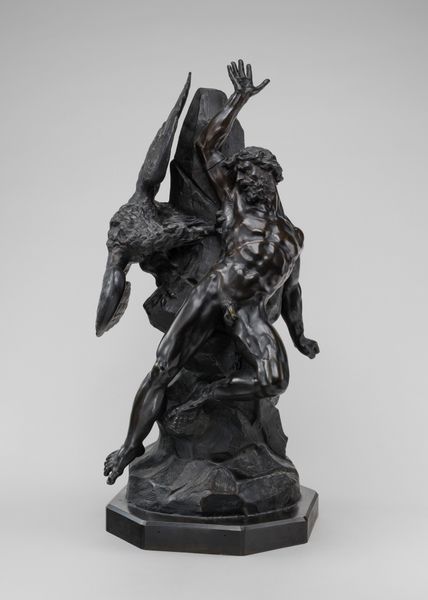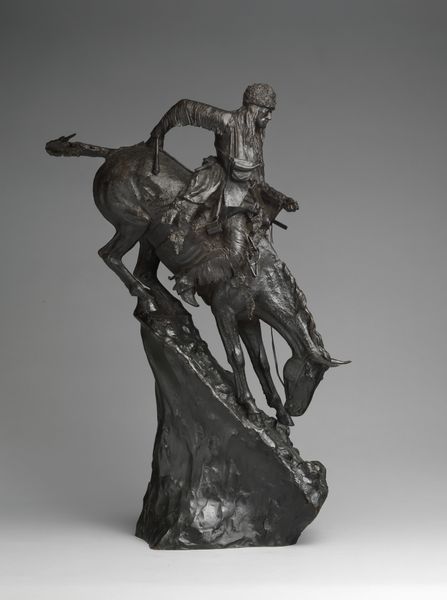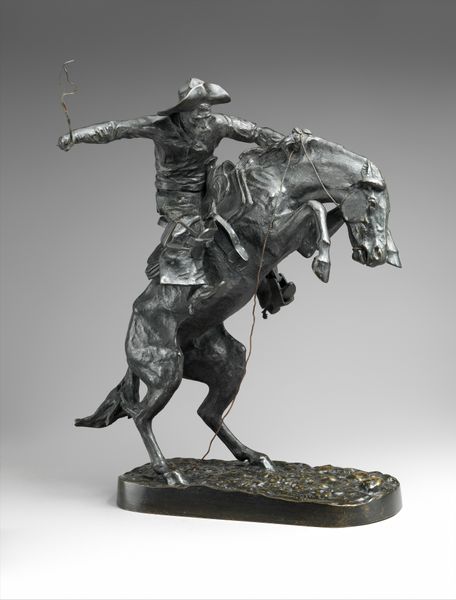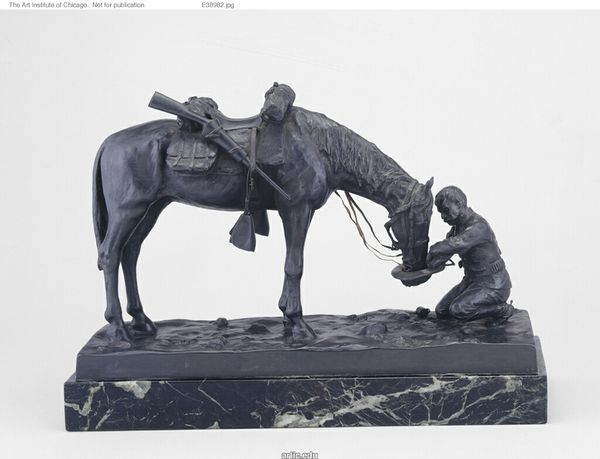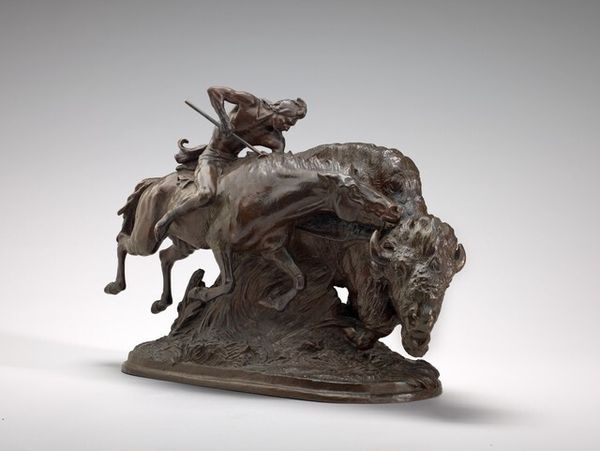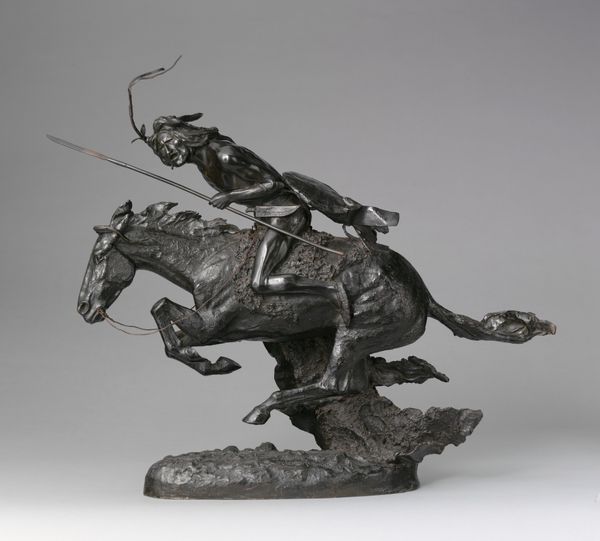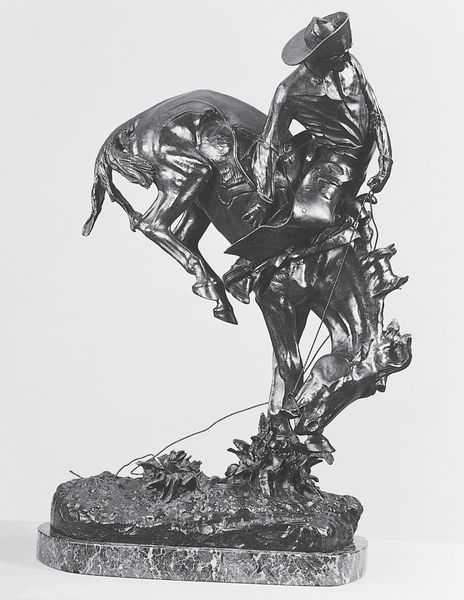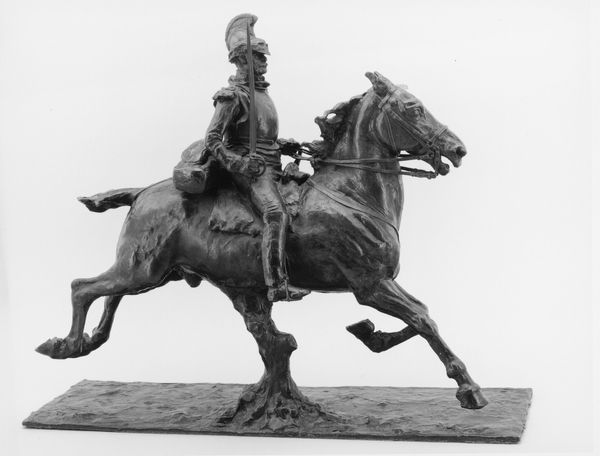
bronze, sculpture
#
portrait
#
narrative-art
#
sculpture
#
bronze
#
figuration
#
sculpture
#
history-painting
#
realism
Dimensions: 73 × 119.3 × 43.8 cm (28 3/4 × 47 × 17 1/4 in.)
Copyright: Public Domain
Curator: Wow, that's...intense! It feels like controlled chaos frozen in time. There's so much energy bursting forth, and you just know those horses are pounding the ground. Editor: Indeed. What we are observing is "The Old Dragoons of 1850," a bronze sculpture by Frederic Remington, likely cast between 1905 and 1907, and residing here at the Art Institute of Chicago. Note how the composition is dynamic, the arrangement of figures deliberately thrusting forward. Curator: Dynamic is an understatement! It’s like Remington caught a moment right before impact. You can practically hear the clatter and shouts of the soldiers. The texture of the bronze is fantastic too; rugged and alive. Editor: Remington skillfully employs rough textures and detailed articulation to create a sense of movement. The upward diagonal created by the swords and weaponry underscores this kinetic energy. Observe also how Remington balances the historical theme with elements of pure artistry; the light playing off the bronze creates intriguing contrasts. Curator: Right! It's history, but it's also storytelling at its finest. These guys seem heroic, yes, but also human and vulnerable in some ways. Look at the angles of their bodies, or their hands. Editor: Precisely. Although Remington worked nearly half a century later, he masterfully portrays a narrative, blending Realism with heroic themes that are immediately felt. There’s something semiotic here, that speaks directly to a cultural identity, the American West in particular. Curator: Exactly! The sculpture becomes an instant reflection on bravery and action; just standing here is invigorating! I almost feel like I could jump into their ranks! Editor: A moment frozen in time, transformed into something permanently awe-inspiring through metal. It shows that historical understanding and aesthetic delight can harmonize beautifully.
Comments
No comments
Be the first to comment and join the conversation on the ultimate creative platform.

